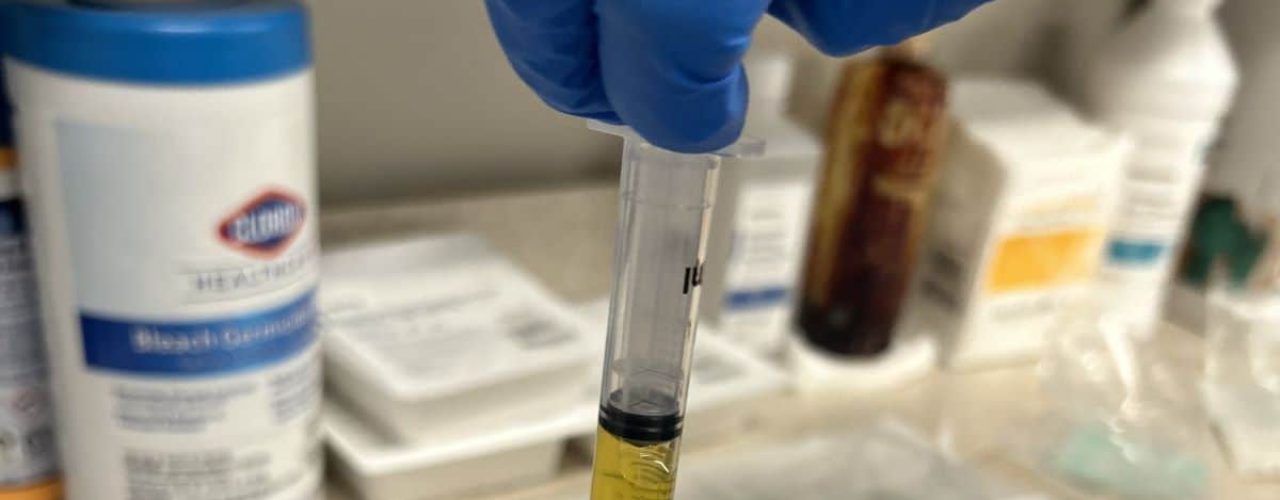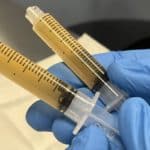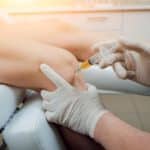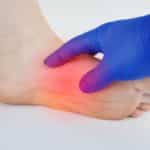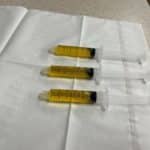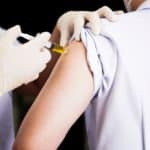Platelet Rich Plasma Injections
Are you in pain? Suffering from sports-related injuries, or arthritis? Or maybe even want to improve your overall health and wellness? Then PRP injections might offer benefits for you.
So what is PRP and what does it stand for?
PRP stands for “platelet-rich plasma”. It’s the liquid portion of blood that contains a higher concentration of platelets than the other components of your blood. A PRP injection, a type of regenerative medicine, uses your own blood and delivers “growth factors” to your damaged tissue to stimulate the body’s natural healing process.
There are many ways to obtain PRP, but the most well-known method is putting the blood tube in a centrifuge and removing red blood cells1.
You have probably seen PRP pop up all over the news recently, and it has left you wondering what it’s used for and its history, like where it comes from. PRP was developed in the 40s but came into practical use in the 50s. The reason for its rise in popularity is that some athletes used it and recommended it to other athletes to heal from sports-related injuries faster.
PRP, however, has many uses in the world of medicine. It can be used in therapy for sports injuries, arthritis, and just plain simple overall health and wellness.
PRP Benefits
PRP treatments have shown many benefits when it comes to sports and is showing remarkable results for people who suffer from musculoskeletal injuries or other soft tissue injuries2, in some cases helping to heal patients in half the time.
Evidence has also shown that PRP can promote the processes involved in tendon repair, whether used for healing muscle tears, strains, or inflammation.
For example, one study by the Journal of the American Academy of Orthopedic Surgeons showed that over 15 patients suffering from muscle injuries received treatment in the form of PRP. All patients made a recovery in half the expected time3.
This is just one of the reasons why athletes use PRP, but it isn’t just limited to sports medicine. Your average person can find a use for it too.
PRP Therapy for Arthritis
So how can PRP serum help with something like arthritis? There is no known cure for it, and studies have shown time and time again that it is a disease that can leave people disabled and unable to work. So how can PRP help patients suffering from it?
PRP may not be able to cure you, but it can do other things. PRP has been shown to help accelerate the healing of damaged body tissues. It also plays a vital role in hemostasis, the first step in stopping bleeding and wound damage.
It is due to these benefits that studies proved time and time again that PRP has helped improve joint pain and stiffness, two common complaints from people suffering from arthritis 4.
Not only does PRP help with joint pain and stiffness, but evidence has also shown that it can improve other things. PRP can help heal body tissues and play a significant role in improving joint function.
In fact, the same study stated that PRP has positive benefits on pain management, overall health, and satisfaction among patients4.
PRP Therapy for Overall Health and Wellness
PRP doesn’t just help people suffering from sports injuries due to traumas. The average person could consider PRP wherever tissue regeneration might be needed.
According to another study (done by the Journal of Oral and Maxillofacial Pathology), PRP has made massive strides in medicine, and because of the way PRP works5, studies (like ones done by Open Medicine) show promise that due to its fast regenerative properties, it can help immune system fight off against nasty infections6.
PRP is a fantastic achievement for modern medicine; not only does it help with pain management, whether it be from sports or illness, but it also helps the immune system. It also has been shown to fight off things such as inflammation throughout the body, assisting patients to recover in half the time.
There have been many studies done on improving overall health and wellness. In fact, the same study (done by the Journal of Oral and Maxillofacial Pathology) showed a lot of promise for people suffering from things such as boldness to even healing scar tissue.
Potential Risks and Side Effects of PRP Therapy
As impressive as PRP is and its promise, like most things, it comes with some risks and, in some cases, side effects. One such risk presented with PRP is the risk of blood clotting7; other adverse reactions include tissue damage, nerve injuries, and infection8.
Some side effects that come with PRP therapy, according to one source, can include bruising, burning, intense itching, swelling, dryness, puffiness, and redness in the injection site9.
For these reasons, it is crucial to pick a qualified provider that can help you make the best decisions for your own health.
With all medical injections, it is also advised that, as a precaution, you avoid any drug use and drinking before treatment. It is also recommended that after receiving an injection, avoid putting any strain on the area.
Conclusion
In conclusion, PRP therapy has shown promise and benefits, including improving skin texture, wound healing, and aiding in the healing of sports injuries such as muscle tears, strains, inflammation, or other similar injuries.
It has the potential to also help people suffering from arthritis or chronic back pain. While it might not cure someone suffering from it, it can help manage the symptoms that come with it successfully and with minimally invasive procedures.
PRP treatment has also been shown to help the immune system, fight off inflammation and help heal scar tissue. With all these benefits, it’s hard to believe that PRP can have side effects, so speaking with a qualified healthcare provider is essential.
If you think that PRP therapy is best for you, don’t hesitate to schedule a consultation today with a qualified expert about it to see if it’s best for you.
Top 5 Common Questions
Q1: What is the primary purpose of PRP?
A1: It is to help those suffering from inflammation and to promote cellular growth.
Q2: Is PRP safe for everyone to take?
A2: While most people can have PRP with minimal risks and side effects, some can’t. PRP cannot be taken if you are pregnant, have cancer, or have a blood clotting disorder.
Q3: How fast does it work?
A3: While results will vary from person to person, most people report it working after their first injection.
Q4: Does PRP therapy hurt?
A4: You might receive some discomfort at the injection site, but other than that, PRP is generally a painless treatment.
Q5: How often will I need PRP therapy treatments?
A5: This answer will vary from person to person, so it’s important to talk to your doctor about it. Some people might need a three-shot regimen followed by a yearly booster shot; athletes might need it more often.
References
Bennell, K.L., Hunter, D.J. and Paterson, K.L. (2017a) ‘Platelet-rich plasma for the management of hip and knee osteoarthritis’, Current Rheumatology Reports, 19(5). doi:10.1007/s11926-017-0652-x.
Nguyen, R.T., Borg-Stein, J. and McInnis, K. (2011) ‘Applications of platelet-rich plasma in musculoskeletal and sports medicine: An evidence-based approach’, PM&R, 3(3), pp. 226–250. doi:10.1016/j.pmrj.2010.11.007.
Hall, M.P.M. et al. (2009) ‘Platelet-rich Plasma: Current Concepts and Application in Sports Medicine’, Journal of the American Academy of Orthopaedic Surgeons, 17(10), pp. 602–608.
Glynn, L.G. et al. (2018) ‘Platelet-rich plasma (PRP) therapy for knee arthritis: A feasibility study in primary care’, Pilot and Feasibility Studies, 4(1). doi:10.1186/s40814-018-0288-2.
Ramaswamy Reddy, S. et al. (2018) ‘Stem-cell therapy and platelet-rich plasma in Regenerative Medicines: A review on pros and cons of the technologies’, Journal of Oral and Maxillofacial Pathology, 22(3), p. 367. doi:10.4103/jomfp.jomfp_93_18.
Pavlovic, V. et al. (2016) ‘Platelet rich plasma: A short overview of certain bioactive components’, Open Medicine, 11(1), pp. 242–247. doi:10.1515/med-2016-0048.
Alsousou, J. et al. (2009) ‘The biology of platelet-rich plasma and its application in trauma and orthopaedic surgery’, The Journal of Bone and Joint Surgery. British volume, 91-B(8), pp. 987–996. doi:10.1302/0301-620x.91b8.22546.
Platelet-rich plasma (PRP) – orthoinfo – aaos (no date) OrthoInfo. Available at: https://orthoinfo.aaos.org/en/treatment/platelet-rich-plasma-prp/ (Accessed: 19 May 2023).
Platelet rich plasma therapy (no date) WA Health, Government of Western Australia. Available at: https://www.health.wa.gov.au/Articles/N_R/Platelet-rich-plasma-therapy (Accessed: 19 May 2023).

